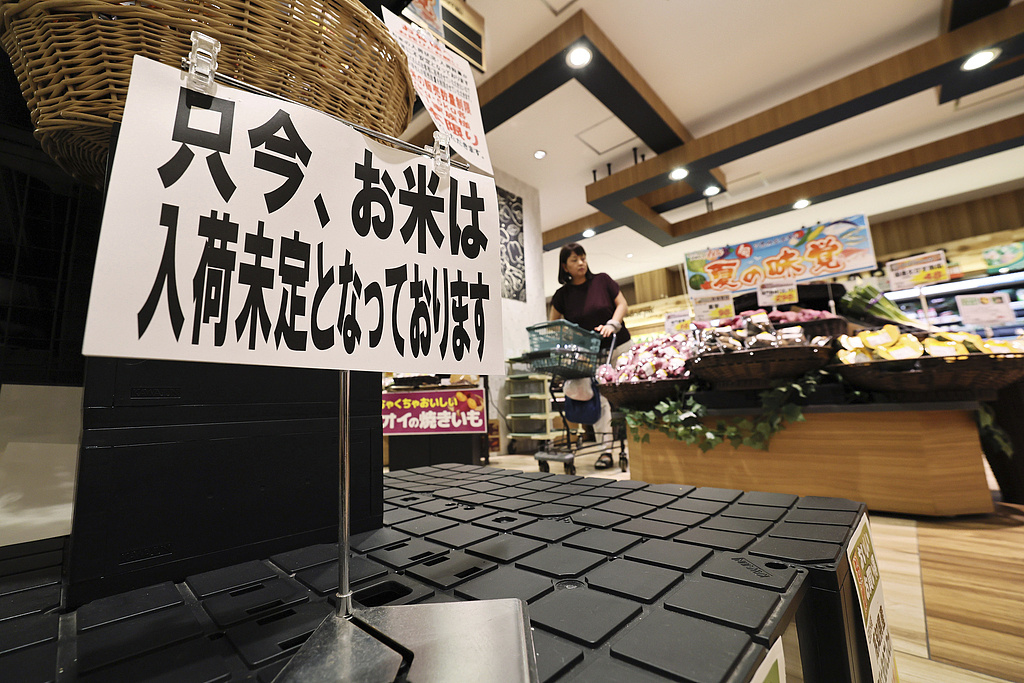Last Summer, supermarkets across Japan ran short of rice. While supply shortages have eased since new rice came on the market, the trend of higher prices has continued.

A 2024 in a store in Osaka, Japan, on August 27,2011, displays a notice of insufficient supplies due to a rice shortage. (visual China)
The average market price of rice reached 3,627 yen (100 yen) per 5 kilograms from January 13 to 19, according to the Ministry of Agriculture, Forestry and Fisheries, year-on-year rise of 1590 yen, up 78% .
Shigeru Ishiba has ordered support policies for low-income families and some groups in response to rising prices, and said the reserve rice should be used flexibly, the Nikkei reported Thursday, ensure a steady supply of rice.
As the price of rice continues to soar, people are complaining that the Ministry of Agriculture, Forestry and Fisheries is taking too long to respond, Yahoo! News reported. “I deeply regret this and will seriously reflect on it,” Minister of Agriculture, Forestry and Fisheries Kondo told the House Budget Committee yesterday amid calls since last summer for the government to use the reserves, but the Ministry of Agriculture, Forestry and Fisheries changed the system and did not allow the government to release the rice until January 31.
According to reports, Japan’s standard use of grain reserves is suffered once-in-a-decade severe production reduction, or two consecutive years of production reduction situation. This is the first time since 2011, Japan adjusted the reserve mechanism, the government intends to release reserves of rice.
According to the Ministry of Agriculture, Forestry and fisheries, 6.79 m tonnes of rice were harvested across the 2024, up 180,000 tonnes on the previous year. However, major buyers, such as JA Group, bought 2.16 m tonnes of rice from farmers, down 210,000 tonnes from the previous year. As a result of increased competition to buy rice from farmers, large buyers have not been able to secure the same amount of rice as in previous years, which has directly led to a shortage of rice reaching the market through the main channels, thus triggering a price spike.